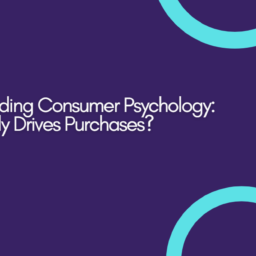In the digital world, every interaction a customer has with your website is part of a larger narrative—the customer journey. This journey is the path users take from the moment they discover your website to the point where they make a purchase, sign up for a service, or complete any other desired action. Understanding this journey is crucial for turning casual visitors into loyal customers.
In this blog, we’ll break down the customer journey, explore its key stages, and offer insights on how to optimize each step to boost your conversion rates.
What is the Customer Journey?
The customer journey refers to the entire experience a user has while interacting with your brand online, typically starting with a simple click on a search result or an ad. This journey includes all the steps and touchpoints that lead to a conversion—a completed action that fulfills a business goal, such as a purchase, sign-up, or download.
The journey is not always linear, as customers may interact with multiple touchpoints across various channels before converting. However, it can generally be broken down into several key stages:
- Awareness
- Consideration
- Decision
- Conversion
- Retention
Stage 1: Awareness
What It Is:
The awareness stage is where potential customers first learn about your brand. This could happen through organic search, social media, paid advertising, or even word of mouth. At this stage, users are often seeking information or solutions to a problem they’re facing.
How to Optimize:
- Content Marketing: Create valuable, informative content that answers common questions or addresses pain points relevant to your audience. Blog posts, videos, and infographics can help attract visitors to your site.
- SEO: Optimize your website for search engines to ensure that your content ranks high on search results pages, making it easier for potential customers to find you.
- Social Media Engagement: Use social media to share your content, engage with your audience, and drive traffic to your site. Consider running targeted ads to reach a broader audience.
Stage 2: Consideration
What It Is:
In the consideration stage, users are aware of your brand and are evaluating whether your products or services meet their needs. They may compare your offerings with those of your competitors, read reviews, or seek more detailed information.
How to Optimize:
- Detailed Product Pages: Ensure that your product or service pages are informative, easy to navigate, and highlight key benefits. Include high-quality images, videos, and customer testimonials to build trust.
- Lead Magnets: Offer valuable resources, such as eBooks, guides, or free trials, in exchange for users’ contact information. This helps you capture leads and continue nurturing them through email marketing.
- Retargeting Campaigns: Implement retargeting ads to keep your brand top-of-mind for users who have visited your site but haven’t yet converted.
Stage 3: Decision
What It Is:
At the decision stage, users are ready to make a purchase or take the desired action. They have narrowed down their options and are considering the final steps before converting. This is where your website needs to provide a seamless, reassuring experience.
How to Optimize:
- Clear Calls to Action (CTAs): Make sure your CTAs are prominent, clear, and compelling. Whether it’s “Buy Now,” “Sign Up,” or “Get Started,” the CTA should guide users towards conversion with minimal friction.
- User-Friendly Checkout Process: Simplify the checkout process by reducing the number of steps, offering multiple payment options, and ensuring mobile compatibility. Provide trust signals, like security badges and customer reviews, to reduce any last-minute hesitation.
- Incentives: Offer incentives such as discounts, free shipping, or limited-time offers to encourage users to complete their purchase or sign up.
Stage 4: Conversion
What It Is:
The conversion stage is the moment of truth—when a user takes the desired action, such as completing a purchase, filling out a contact form, or subscribing to a newsletter. It’s the culmination of all the efforts in the previous stages.
How to Optimize:
- Thank You Pages: After a user converts, direct them to a well-designed thank you page that confirms their action and provides next steps, such as sharing on social media or exploring related products.
- Follow-Up Emails: Use automated email sequences to follow up with new customers, confirm their purchase or sign-up, and offer additional value, such as product recommendations or useful content.
- Analytics: Continuously track and analyze your conversion rates to identify areas for improvement. Use tools like Google Analytics, heatmaps, and A/B testing to refine your conversion strategies.
Stage 5: Retention
What It Is:
The customer journey doesn’t end at conversion. Retention focuses on keeping customers engaged and encouraging repeat business. A loyal customer base is more valuable than constantly acquiring new customers, as repeat customers tend to spend more and are more likely to refer others.
How to Optimize:
- Personalized Email Marketing: Use email campaigns to keep in touch with customers, offering personalized recommendations, exclusive deals, and updates on new products or services.
- Loyalty Programs: Implement loyalty programs that reward repeat customers with points, discounts, or special perks, encouraging them to return to your site.
- Customer Support: Provide excellent customer service, both through direct support channels and by offering helpful resources on your website, such as FAQs, tutorials, and user guides.
Conclusion
Understanding the customer journey on your website is key to turning clicks into conversions. By optimizing each stage of the journey—from awareness to retention—you can create a more engaging, efficient, and effective online experience that not only attracts visitors but also converts them into loyal customers.
Remember, the customer journey is dynamic and can vary from person to person. Regularly analyze your website’s performance, listen to customer feedback, and stay adaptable in your strategies. By doing so, you’ll not only increase your conversion rates but also build a stronger, more resilient online presence that drives long-term success.




